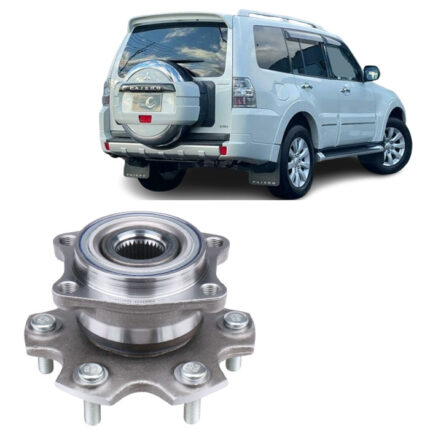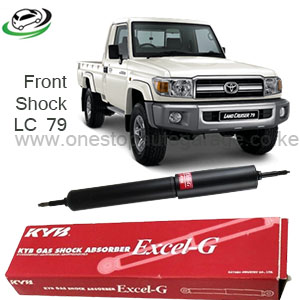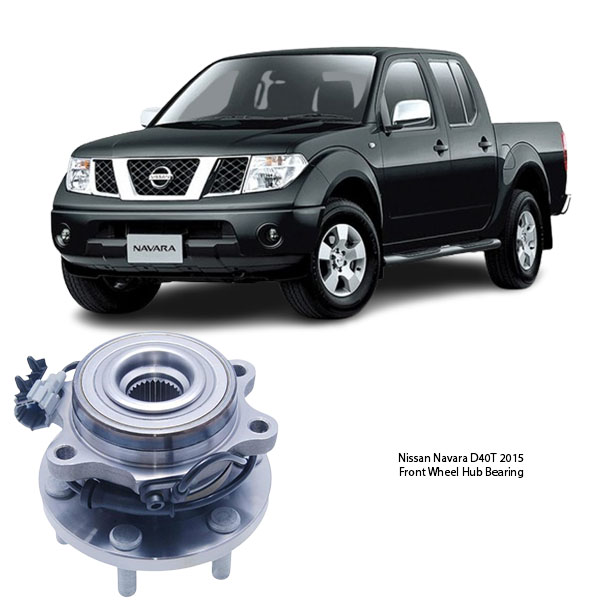-10%
Get Nissan Navara D40T 2015 Front Wheel Hub Bearing 40202-4JA3A in Kenya
The front wheel hub bearing is a crucial component in a vehicle’s drivetrain and suspension system. It allows the wheels to rotate smoothly with minimal friction, supports the vehicle’s weight, and ensures stable handling and precise steering.
Over time, the hub bearing can wear out due to friction, contamination, or heavy loads, leading to issues like vibrations, noise, and compromised safety. In this guide, we will discuss the functions, types, benefits, symptoms of failure, causes of wear, maintenance tips, and replacement procedures for front wheel hub bearings.
2. What is a Front Wheel Hub Bearing?
A wheel hub bearing is a sealed, lubricated bearing assembly that connects the wheel hub to the axle, allowing the wheel to spin freely. In modern vehicles, front wheel hub bearings are often integrated into the wheel hub assembly, which may also include ABS (Anti-lock Braking System) sensors.
2.1 Components of a Front Wheel Hub Bearing
- Outer Race – The stationary outer ring that encases the rolling elements.
- Inner Race – The rotating inner ring connected to the axle.
- Rolling Elements – Either ball bearings or tapered rollers that reduce friction.
- Seal – Protects the bearing from water, dirt, and debris.
- Grease – Ensures smooth operation and prevents overheating.
3. Functions of a Front Wheel Hub Bearing
3.1 Enables Smooth Wheel Rotation
- Allows the wheel to spin freely with minimal resistance.
3.2 Supports Vehicle Weight
- Bears a portion of the vehicle’s weight and impact forces.
3.3 Improves Steering and Handling
- A properly functioning hub bearing ensures stable steering response.
3.4 Reduces Friction and Heat
- The lubricated rolling elements reduce wear and overheating.
3.5 Ensures Wheel Alignment and Stability
- Prevents wobbling or excessive wheel movement, improving safety.
4. Types of Front Wheel Hub Bearings
4.1 Ball Bearings
- Common in passenger vehicles.
- Handle both radial and axial loads efficiently.
4.2 Tapered Roller Bearings
- Used in trucks and heavy-duty vehicles.
- Handle higher loads and cornering forces.
4.3 Sealed Hub Bearings
- Pre-assembled and maintenance-free.
- Integrated with ABS sensors in modern vehicles.
4.4 Non-Sealed Bearings
- Require periodic lubrication and adjustment.
- Used in older or heavy-duty vehicles.
5. Symptoms of a Failing Front Wheel Hub Bearing
5.1 Unusual Noises (Grinding, Humming, or Clicking)
- Worn bearings produce a grinding, humming, or clicking sound, especially during turns.
5.2 Steering Wheel Vibration
- A failing bearing causes vibrations, especially at high speeds.
5.3 Uneven or Rapid Tire Wear
- Misalignment due to worn bearings can cause irregular tire wear.
5.4 Loose or Wobbly Steering Feel
- Excessive play in the bearing affects steering precision.
5.5 ABS Warning Light Activation
- Faulty hub bearings with integrated ABS sensors can trigger dashboard warnings.
5.6 Increased Rolling Resistance
- A damaged bearing reduces fuel efficiency due to higher friction.
6. Causes of Front Wheel Hub Bearing Failure
6.1 Contamination (Dirt, Water, and Road Salt)
- Foreign particles can damage the bearing seal and lead to corrosion.
6.2 Lack of Lubrication
- Insufficient grease increases friction and wear.
6.3 Overloading the Vehicle
- Excessive weight accelerates bearing fatigue.
6.4 Driving on Rough Terrain
- Potholes and harsh roads cause excessive stress on the bearings.
6.5 Improper Installation
- Over-tightening or misalignment leads to premature bearing failure.
7. Maintenance Tips for Front Wheel Hub Bearings
7.1 Regular Inspections
- Check for noise, play, or irregular tire wear every 20,000 – 30,000 km.
7.2 Keep Bearings Clean and Dry
- Avoid driving through deep water and inspect seals for damage.
7.3 Use High-Quality Bearings
- Opt for OEM or premium aftermarket bearings for durability.
7.4 Follow Proper Torque Specifications
- Over-tightening can stress the bearing and shorten its lifespan.
7.5 Replace Both Bearings if Necessary
- If one side fails, the other is likely worn and should be replaced as well.
8. Replacing a Front Wheel Hub Bearing
8.1 Tools Required
- Jack & Jack Stands
- Socket Wrench Set
- Torque Wrench
- Bearing Puller Kit
- Hammer & Pry Bar
8.2 Step-by-Step Replacement
Step 1: Lift the Vehicle and Remove the Wheel
- Secure the vehicle on jack stands and remove the front wheel.
Step 2: Remove the Brake Components
- Detach the brake caliper, rotor, and dust shield.
Step 3: Unbolt the Wheel Hub Assembly
- Locate and remove the hub bolts holding the bearing.
Step 4: Extract the Old Bearing
- Use a bearing puller or press to remove the worn-out hub bearing.
Step 5: Install the New Hub Bearing
- Align and secure the new bearing into the hub assembly.
Step 6: Reassemble and Torque Everything
- Secure the hub bolts, brake components, and wheel, tightening to OEM torque specs.
Step 7: Test Drive the Vehicle
- Drive at various speeds to ensure smooth operation.
9. Benefits of a New Front Wheel Hub Bearing
9.1 Smoother Ride Quality
- Eliminates vibrations and road noise.
9.2 Enhanced Steering Response
- Improves handling precision and stability.
9.3 Better Fuel Efficiency
- Reduces rolling resistance, improving mileage.
9.4 Longer Tire Life
- Prevents irregular tire wear.
9.5 Improved Safety
- Ensures secure wheel attachment and braking performance.
10. Conclusion
The front wheel hub bearing is an essential component that ensures smooth wheel rotation, stability, and precise steering. Regular inspections, proper lubrication, and timely replacements are key to maintaining optimal vehicle performance and safety.
When replacing a front wheel hub bearing, always choose high-quality parts, follow the manufacturer’s specifications, and consider replacing both sides to ensure balanced wear. By keeping your wheel bearings in top condition, you enhance the durability, efficiency, and safety of your vehicle.
Follow us on Facebook for more parts.



